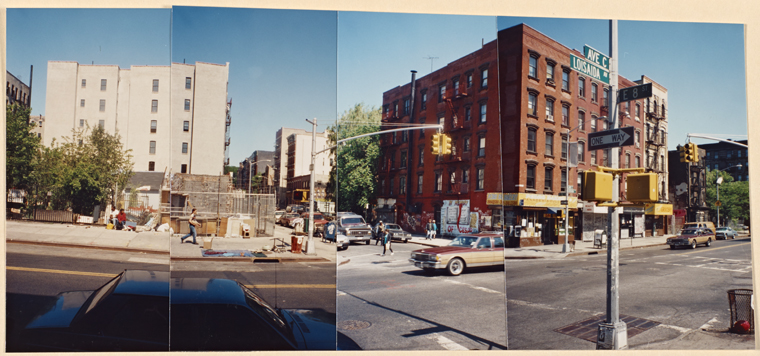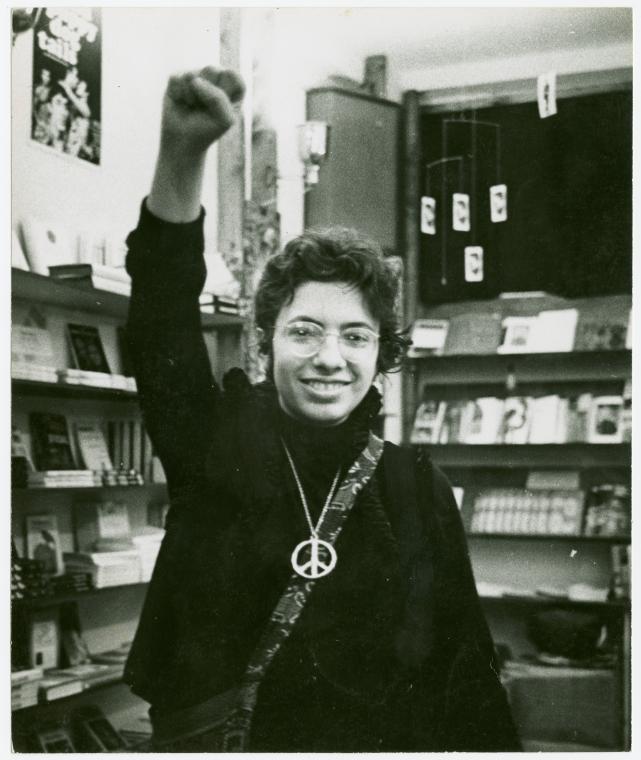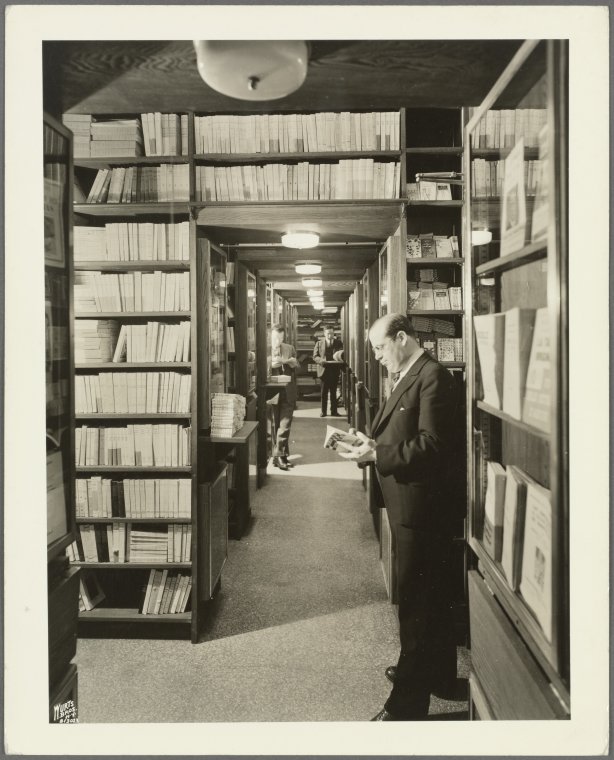Blog Archive
Shop Around the Corner: A Tale of Rising Commercial Rents

A photo collage of the East Village in the Early 1990s by Bill Barvin. An apt method of portrayal for a mosaic of a neighborhood. Image courtesy of the NYPL.
One marker of New York’s changing neighborhood is the closure of the East Village haunt, St. Mark’s Bookshop…. Or is it?
The end of St. Mark’s Bookshop is an easy harbinger of doomsday from a certain perspective: if an independent bookstore cannot survive in what was once one of New York’s edgiest neighborhoods, then the independent spirit of urban culture is done for. Small shops represent the kind of niche identity that was once a marker of urban life. In a city of around 8,491,079 why not have a shop specializing in just vegan cosmetics, or just rubber stamps. New York observers have stressed the grim news that these smaller shops are closing due in part to rocketing commercial property values.

Martha Shelley in 1969 at the now defunct Oscar Wilde Memorial Bookstore formerly of the West Village. Photograph of the NYPL.
The rising cost of commercial real estate is creating sweeping vacancies and long-shuttered restaurant spaces and storefronts. This is commonly called “Urban Blight,” and The New Yorker‘s Time Wu has applied this title to the situation in the West Village, where rising costs are especially pronounced and the history of independent shops is especially rich. Historically, this term was applied to a neighborhood when widespread depression made development impossible or high crime kept shop owners away. The situation in the West Village is in many ways an opposite scenario. Real estate values are so high, as the neighborhood is so desirable, that local businesses have no hope of paying rents.
Tim Wu reported that Gray’s Papaya, a famous hot dog shop, closed when its landlord announced a rent increase of $20,000 a month. At these prices real estate owners are hoping for the only tenants who can pay- large national chains, such as banks and pharmacies. These storefronts often stand empty as landlords wait for these big-ticket tenants. Wu points out that this turn of events is particularly tragic in the West Village as urban sociologist Jane Jacobs once characterized it as an exemplary healthy neighborhood. But it seems increasingly that the blight is spreading across town to the East Village. Here, too, this development will be particularly bitter. What is now the East Village was only christened with this name relatively recently. During other moments in its history the area was called Alphabet City and was known for low rents, punk rock, poetry, large Puerto Rican populations, as well as radical and less radical squatters taking vacant buildings into their own hands.
St. Mark’s was open to all but known especially for a neighborhood-appropriate mix of poetry and critical theory since 1977. The shop moved off of St. Mark’s Street 14 years ago to 3rd Avenue, where it reached its apotheosis as a stylish crowd came to patronize the alternative books for which it was famous. When the monthly rent for that space rocketed to $23,500, St. Mark’s Bookshop relocated to East 3rd Street to a space owned by the city. This cooled things off a little, and their rent dropped back down to $6,000 a month.

A man browsing in the now defunct Librairie de France in the Fred F. French Building at Rockefeller Plaza. Photo courtesy of the New York Public Library.
St. Mark’s however has continued to experience hard times, sales have slumped and last week they announced they were closing – this time perhaps for good. St. Mark’s Bookshop was for many a rallying point for the creative diversity of East Village residents. Some changes to the East Village can be considered improvements – the neighborhood is cleaner and safer – but rents are rising accordingly. Rising rents are affecting more than just the East and West Village and urban living sometimes seems to be changing by the day. St. Mark’s Bookshop’s prodigious philosophy section once spoke to the challenges of the modern era but Villagers will have to go elsewhere for answers now.
–Posted by Julia Berick, Marketing and Communications Coordinator